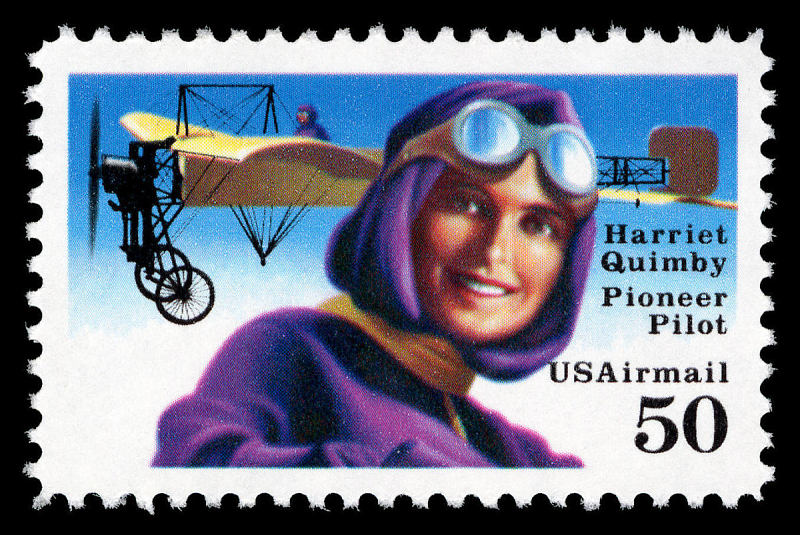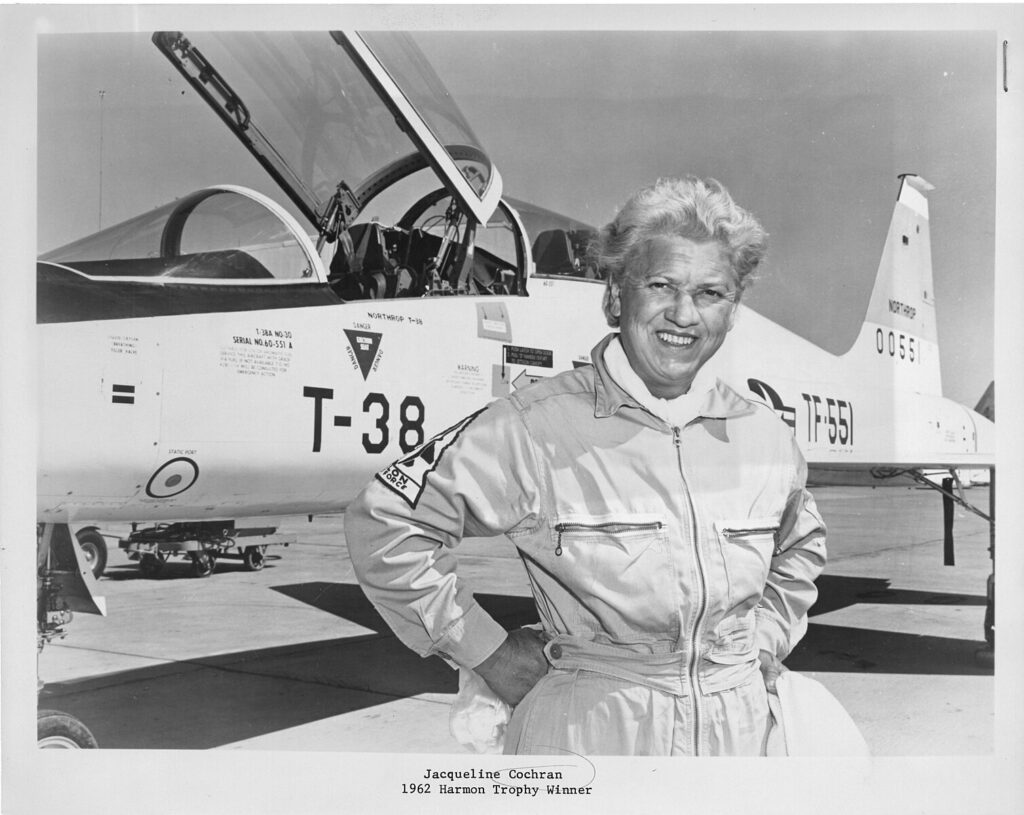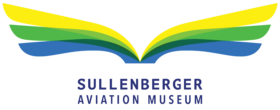History of Women in Aviation: Pioneer Female Pilots 1900 to Today
Early Pioneers
Katharine Wright – The sister of the Wright Brothers. In remembering the financial and moral support she provided to them, her brother Wilbur said, “If ever the world thinks of us in connection with aviation, it must remember our sister.” She first flew with her brothers for their demonstration flights in France in 1909.
Baroness Raymonde de Laroche – French, she was the first woman in the world to solo in 1909 and the first woman in the world to earn her pilot’s license in 1910.
Bessica Raiche – She returned to America with her French husband and they began building aircraft in their living room. She is given credit for being the first American woman to solo on September 16, 1910, in one of the aircraft she and her husband built.
Harriett Quimby – She was the first American woman to earn a pilot’s license in 1911, and she was the second woman in the world to do so. Became the first woman to fly the English Channel on April 15, 1912, but her feat went largely unnoticed as the Titanic sank the same day. She was killed in an aircraft accident in 1912.

Tiny Broadwick – She began her career parachuting from balloons. She was the first woman to parachute from an airplane. In 1915, she became the first person to demonstrate parachutes to the US Army.
Katherine Stinson – She was the first woman to fly the mail and the first woman in the world to own a flying school. In 1913, Katherine and her mother created Stinson Aviation Company to rent and sell airplanes. In 1917, Katherine toured Asia, and was the first woman to fly in Japan or China.
The 1920’s & 1930’s
Bessie Coleman – She was the first African American (either gender) to earn a pilot’s license, but she had to travel to France to do so, because none of the American schools would train blacks. She earned her pilot’s license in France in 1921, returned to America and took up stunt flying to earn money.
Lady Mary Bailey – From Ireland, she earned her pilot’s license in 1926 and immediately flew the Irish Sea. She became the first woman to qualify for a “blind-flying” certificate (instrument rating). Two years later she left London on a solo flight to Cape Town, South Africa. She returned solo via the west coast of Africa.
Phoebe Omlie – She was the first woman to earn a transport license in 1927. In 1930 she won the Dixie Derby Air Race, and then in 1931 she won the National Air Races in Cleveland, the first year women were admitted to the race. She went to Washington, DC, as the private flying specialist for the Civil Aeronautics Authority (CAA) to help the country prepare for World War II, where she chose flying schools that could serve as training centers for military flyers. She tried to convince the CAA to use women as flight instructors, but they turned her down. She took her proposal to the Tennessee Bureau of Aeronautics and they accepted it, prompting other states to do so.
Amelia Earhart – She became the first woman to fly across the Atlantic in 1928, as a passenger. She gained fame from this, but it was by no means her most significant contribution to aviation. She became the first woman to fly across the Atlantic solo in 1932. In 1935, she became the first person to fly solo across the Pacific from Honolulu to Oakland. Two years later Amelia and her navigator Fred Noonan began their around-the-world flight.
Bobbi Trout – She earned her pilot’s license in 1928. In 1929, she regained the women’s endurance record from Elinor Smith, and at the same time gained records for the first all-night flight by a woman, most miles covered by a 60-horsepower engine, and heaviest fuel takeoff to date. With Elinor Smith in November 1929, she established an endurance record of 42 hours and 3.5 minutes, which was also the first refueling endurance record attempted by a women’s team. In 1996, she was the first woman to receive the Howard Hughes Memorial Award from the Aero Club of Southern California.
Pancho Barnes – She earned her first world speed record (1930), besting Amelia Earhart’s record. In 1931, she and Lavelle Sweeley organized women pilots and medical personnel into the Women’s Air Reserve (WAR), to provide aid during national emergencies. The WAR was disbanded in 1941 when opportunities appeared for women to join such organizations as the Women Airforce Service Pilots (WASP).
Anne Morrow Lindbergh – She was the first American woman to earn a glider pilot’s license. She was determined to help her husband Charles on his pioneer routes for the airline industry. In order to do so, she learned Morse code and earned a radio operator’s license. In 1933 she accompanied her husband on a 5-month 30,000-mile survey for Transcontinental Air Transport, through Greenland, Iceland, Russia, England, Spain, Africa and Brazil.
During the trip, she established a world record for radio communication between aircraft and ground stations when she made contact with Sayville, Long Island, while flying off the coast of West Africa. She was the first woman to be awarded the National Geographic Society’s highest award, the Hubbard Gold Medal, for her achievements as copilot and navigator on that trip.
Katherine Cheung – She was the first Asian-American woman to earn a pilot’s license in 1932. Three years later she obtained an international airline license and flew as a commercial pilot. She flew aerobatics in an open cockpit fleet and regularly entered competitive air races.
World War II Military & Support
Lily Litvak – She was a Russian fighter pilot of the 586th regiment who shot down 12 German aircraft and shared the credit for two others. Her regiment mate Katya Budanova shot down even more aircraft but the exact number is unknown. They were both killed in action in 1943.
Rose Clement – She served as a Navigator in the US Navy during World War II. Women navigators were the first US military women to be aircrew, to wear wings, and to receive flight pay (half their base pay). They were generally assigned as navigator instructors, in pairs at various bases around the country, after satisfactory completion of celestial navigation training.
Pauline Gower – In Britain in November 1939, she proposed and was granted permission to form the Women’s Section of the Air Transport Auxiliary (ATA), which would ferry aircraft from the DeHaviland factory to RAF training bases. She was the first woman to be allowed into, let alone fly, a Royal Air Force plane. Ann Wood-Kelly was one of the first 24 American women pilots to serve in the British ATA. She ferried more than 900 planes of 75 different types, mostly the renowned Spitfires, to destinations in England and France. In recognition of this service, she was awarded the King’s Medal by King George IV, presented to her in Washington D.C. by the British Ambassador.
Jacqueline Cochran – She proposed a program to allow women pilots to staff non-combat duties. Became the director of the WASPs. First woman to break the sound barrier and went on to set more speed, altitude, and distance records than any other pilot (male or female), holding them until 1980.

Nancy Harkness Love – An American, she founded, and was named commander of, the Women’s Auxiliary Ferrying Squadron (WAFS) in September 1942. The 28 women pilots who made up her squadron were the first women to ferry airplanes for the U.S. Army. She also was the first woman to fly the P-51, P-38, B-25 and the B-17. In 1946, she was awarded the Air Medal and a citation for her leadership of women flying advanced military aircraft.
Betty Huyler Gillies – She was one of the original Ninety-Nines. She flew as a test pilot for Grumman aircraft, was one of Nancy Love’s first recruits into the WAFS, and later served in the WASP and the US Air Force Reserve. In 1981, she received the Elder Statesman of Aviation Award from the National Aeronautic Association of the U.S.
Gloria Heath – A WASP, she flew the B-26 aircraft towing aerial gunnery targets. She was a founding member of the International Flight Safety Foundation. She is recognized internationally for her initiatives resulting in the use of cockpit recorders for accident investigation, safety improvements, and a global satellite-aided system of response to disaster/distress.
Hazel Ah Ying Lee and Margaret “Maggie” Gee – Two Chinese Americans, they served as WASP. Hazel had traveled to China in 1932 with the intention of joining the Chinese Air Force to fight against the Japanese, but was not allowed to do so. She came back to the US, joined the WASP, and was stationed at Romulus Army Air Base, Michigan. On November 25, 1944, she died as the result of a midair collision with another P-63 on landing approach.
Mary Utterback Barr – She worked nights in a factory to pay for flying lessons, then moved to New York to attend aircraft mechanic’s school and worked on airplanes during World War II. Barr also served as an FAA Pilot Examiner and Accident Prevention Counselor, and in a variety of positions within the United States Forest Service, including being the first woman pilot and smokejumper.
Willa Brown Chappell – An African-American, she taught other blacks to fly. In 1942 she became the first African-American woman member of the Civil Air Patrol (CAP). With husband Cornelius Coffee, she created the Coffee School of Aeronautics, the first US government approved school of aviation for blacks. The school ran the studies that led the Army to admit blacks into the U.S. Army Air Corps, and was the beginning of the Tuskegee Institute.
Mary Feik – She taught aviation mechanics for the US Army Air Corps. During World War II, she became an expert on several fighter planes, and is credited with becoming the first woman engineer in research and development for the Air Technical Service Command. She flew more than 5,000 hours as a B-29 flight engineer, engineering observer and pilot in fighter, attack, bomber, cargo and training aircraft.
Women Airforce Service Pilots (WASPs)
Commercial Aviation
Helen Richey – On December 31,1934, she won a contest against eight male pilots to become a copilot for Central Airlines, making her the first US woman to pilot an airmail transport aircraft on a regular schedule. The male pilots refused to admit her to their union, and they pressured her employers to prohibit her from flying in inclement weather. She resigned rather than be treated unfairly.
Emily Howell Warner – She became the first permanent woman pilot for a scheduled US passenger airline, when Frontier Airlines agreed in January 1973 to take the bold step of hiring a woman. In 1974, she became the first woman member of the Air Line Pilots Association (ALPA). She became the first female U.S. airline captain, of a Twin Otter, in 1976.
Lorna DeBlicquy – Canadian, she wrote a guest editorial in 1974 in Canadian Flight protesting the discrimination against women pilots by Crown Corporation Air Transit. The article attracted national comment in the media and contributed to the improved climate which now ensures women a place in the cockpits of Canada’s major airlines. In 1995, she was awarded the Order of Canada, which honors Canadian citizens for outstanding achievement and service to the country or to humanity at large.
Evelyn Bryan Johnson – She received her private pilot’s license in 1945, her commercial rating in 1946, and her flight instructor’s certificate in 1947. She has been a flight instructor for 45 years, and has given flight examinations for various licenses and certificates for the FAA to more than 9,000 applicants. In 1991, she passed her 50,000th hour of logged flight time, believed to be the most ever accumulated by a woman pilot.
Ellen Church – She was the first female flight attendant. A trained nurse and pilot, Church wanted to pilot commercial aircraft, but those jobs were not open to women. Still wanting to fly, Church successfully worked to convince Boeing Air Transport that using nurses as flight-stewardesses would increase safety and help convince passengers that flying was safe. Their first flight took off on May 15, 1930.
Aviation Organizations
Ada Brown – She was hired as a stewardess by United Airlines in 1940. Recognizing the widespread discrimination that stewardesses faced on the job, Brown and a group of her flying partners signed up almost 300 women, forming the world’s first stewardess union at United, the Air Line Stewardess Association (ALSA) in 1945. Today, thanks to Ada Brown, flight attendants at United Airlines and 25 other carriers are represented by the union that grew from ALSA: The Association of Flight Attendants.
Audrey Poberezny – She has played an active role in the formation, administration and operation of the Experimental Aircraft Association (EAA) since its founding in 1953. She has been instrumental in helping the organization grow from a local club for amateur aircraft builders into an international organization that embraces virtually the entire spectrum of sport aviation.
Nancy Hopkins Tier – She started flying in November 1927, and has entered and won many air races. She joined the Civil Air Patrol in 1942, where she served for 18 years and was the first woman to achieve the rank of Colonel as Wing Commander of Connecticut. In 1969 she joined the official board organized by the Ninety-Nines to create the International Women’s Air and Space Museum (IWASM), and was IWASMs first President when it opened in 1986.
Amy Carmien – She founded the publication Women in Aviation in 1988. She was a founding board member of Women in Aviation International (WAI) and a trustee of the International Women’s Air and Space Museum (IWASM). Amy has been inducted into the International Forest of Friendship and was honored by the Northwest Michigan Women’s History Project.
Sport Aviation & Records
Betty Skelton Frankman – She became internationally famous after winning the 1948, 1949, and 1950 Women’s International Aerobatic Championships. Her Pitts Special experimental bi-plane, Little Stinker, is now displayed in the National Air and Space Museum.
Geraldine Mock – In 1964, she became the first woman to fly around the world, completing Amelia Earhart’s 1937 goal, in a single engine Cessna 180 named the Spirit of Columbus. Her around the world flight made her the first woman to fly both the Atlantic and Pacific, the Pacific in both directions, and the Pacific in a single-engine airplane.
Marion Jayne – She is known on six continents as the world record holder for the most cross-country speed race victories, as the FAI Gold Medalist for the longest race, and as the only US pilot to race twice around the world. Jayne and her daughter, Pat Keefer, received the Federation Aeronautique Internationale (FAI) Gold Medals for winning the longest race in history–24 days around the world.
Cheryl Stearns – She was a Boeing 767 pilot and was the first woman on the U.S. Army Parachute Team, the Golden Knights, in 1977. She has 30 world parachuting records, is 21-time national woman’s champion, and twice world champion. She has over 15,000 skydives, the most of any woman in the world.
Patty Wagstaff – She is a three-time U.S. National Acrobatic Champion and six-time member of the US National Aerobatic Team. The airplane used in her 1991 victory in the US National Aerobatic Championship, the prototype BF Goodrich Aerospace Extra 260, is on display at National Air & Space Museum in Washington, DC.
Test Pilots
Ann Baumgartner Carl – She became a WASP during World War II. She was transferred to Wright Field in Dayton, Ohio, where she became their first and only female test pilot. On October 14, 1944, Ann became the first woman to fly a jet aircraft, the Bell YP-59A. A partial list that she flew during her WASP service include: AT-7, AT-17, AT-10, C-45, C-47, A-24, A-25, B-25, B-26, B-17, B-29, P-38, P-40, P-47, P-51, YP-59A as well as foreign-made Avro Lancaster, deHavilland Mosquito, Spitfire, Junkers Ju-88, and the Canadian C-64.
Cecil “Teddy” Kenyon, Barbara Kibbee Jayne, and Elizabeth Hooker – They all flew as test pilots for Grumman Aircraft during World War II. Right off the assembly line, they flew the F6F Hellcat, the fighter plane that was the backbone of the naval air war against Japan. They served as test pilots at Grumman throughout the war, drawing the admiring attention of newspapers and national magazines.
Jacqueline Auriol – A French pilot, she was the first woman admitted to the Bretigny Flight Test Center, and after 16 months of training she became a test pilot in 1952. She was the second woman to break the sound barrier. She and Jacqueline Cochran traded speed records publicly and regularly. Each held the same women’s world speed record five times.
Marta Bohn-Meyer – She was the first woman to fly as a crewmember aboard the SR-71, a Mach-3 research aircraft at NASA Dryden (Edwards AFB). As an aeronautical engineer, her first job at NASA Dryden was conducting research involving the thermal protection tiles on the Space Shuttle. In 1990 she won the California Championship title in the intermediate category of aerobatic competition.
Jeana Yeager – In 1981, with partner Dick Rutan, she founded Voyager Aircraft, Inc. where she devoted herself exclusively to the building, testing, and flying of the Voyager for its around the world, non-stop, non-refueled flight. On December 14, 1986, Yeager and Jeana began their history-making flight in the Voyager, flying the maximum circumference of the globe in just over nine days.
